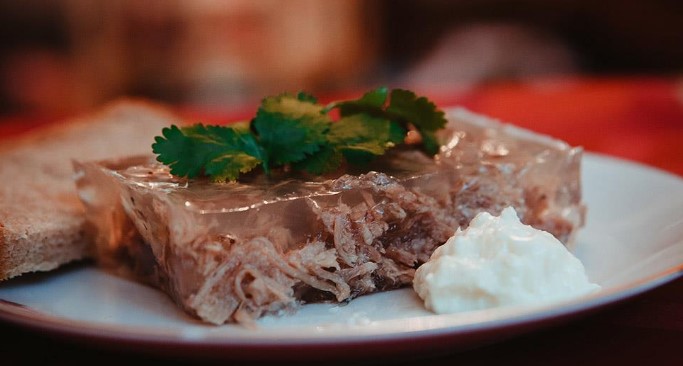Introduction: The Rich History of Russian Cuisine
Russian cuisine is a combination of diverse cooking styles and ingredients influenced by various countries and regions. It includes dishes from the Baltic, Ukrainian, Caucasian, Central Asian, Siberian, and Far Eastern regions of Russia. Russian cuisine’s evolution over centuries is a testament to the country’s rich cultural heritage.
Russia’s harsh climatic conditions have also played a role in shaping the country’s cuisine. Root vegetables, grains, dairy products, and meat have traditionally been the staples of Russian food. The country’s cuisine is known for its hearty, flavorful dishes that are perfect for the Siberian winters.
Borscht: The Iconic Soup of Russia
Borscht is a soup that originated in Ukraine but is now considered a staple in Russian cuisine. The soup’s primary ingredient is beets, which give it its signature deep red color. Other vegetables such as cabbage, carrots, onions, and potatoes are added to the soup, along with meat or sausage. Served with a dollop of sour cream, borscht is a flavorful soup that warms you up on a cold winter day.
Borscht has a rich history that dates back to the 9th century. Originally made with beans and meat, the soup evolved over time, and by the 18th century, beets had become the primary ingredient. Today, borscht is enjoyed not just in Russia but also in other countries such as Poland and Romania.
Pelmeni: The Comfort Food of Siberia
Pelmeni are small dumplings made from minced meat (usually beef or pork) and wrapped in a thin dough. The dumplings are boiled and served with sour cream or butter. Pelmeni are a popular comfort food in Siberia, where they have been a staple for centuries.
The origin of pelmeni is unclear, but it is believed that they were introduced to Russia by the Mongols. The dumplings were initially made with wild game meat, but over time, beef and pork became the preferred choices. Pelmeni are easy to make and can be frozen, making them a convenient meal option.
Blini: The Versatile Pancake of Russian Cuisine
Blini are thin pancakes made from buckwheat or wheat flour. They can be served with a variety of fillings, such as smoked salmon, caviar, sour cream, or fruit preserves. Blini are a versatile dish that can be served as an appetizer, main course, or dessert.
Blini have been a staple of Russian cuisine for centuries and are often associated with Maslenitsa, a holiday that marks the end of winter. During Maslenitsa, people eat blini with various fillings and drink tea or vodka. Blini are easy to make and can be frozen for later use.
Shashlik: The Russian Version of Barbecue
Shashlik is a type of kebab that originated in the Caucasus but has become a popular dish in Russia. The kebabs are made from marinated chunks of meat (usually lamb or pork) that are grilled over an open flame. Shashlik is typically served with onions, tomatoes, and peppers.
Shashlik has been a part of Russian cuisine since the 19th century when soldiers returning from the Caucasus brought the dish with them. It has since become a staple of Russian summer cuisine, and families often gather to grill shashlik in parks or their backyards.
Olivier Salad: Russia’s Classic Salad Dish
Olivier salad is a classic Russian salad made from boiled potatoes, carrots, eggs, and pickles, mixed with mayo and often served with canned peas and ham. The salad originated in the 19th century and was created by a Belgian chef named Lucien Olivier. The original recipe was a secret, and it is said that only Olivier knew the exact ingredients.
The salad has evolved over time, and today there are many variations of the dish. Olivier salad is often served at New Year’s Eve celebrations and is a favorite dish during the holiday season.
Pirozhki: The Savory Pastry of Russia
Pirozhki are small pastries filled with meat, vegetables, or cheese. The pastries are usually baked but can also be fried. Pirozhki are a popular snack in Russia and can be found in bakeries and street vendors.
Pirozhki have been a part of Russian cuisine since the Middle Ages and were traditionally filled with meat or fish. Today, pirozhki come in many shapes and sizes and can be filled with almost anything. The pastries are often served with tea or kvas.
Kvass: The Traditional Russian Beverage
Kvass is a traditional Russian beverage made from fermented rye bread. The beverage has a low alcohol content and is similar to beer. Kvass can be sweetened with sugar or flavored with fruits or herbs.
Kvass has been a part of Russian cuisine for centuries and was traditionally made at home. Today, kvass can be found in supermarkets and specialty shops. It is a popular summer beverage in Russia and is often served with ice and a slice of lemon.
Caviar: Russia’s Most Celebrated Delicacy
Caviar is a delicacy made from the eggs of sturgeon fish. The most famous type of caviar is beluga caviar, which comes from the beluga sturgeon found in the Caspian Sea. Caviar is expensive and is often served as a luxury item at high-end restaurants.
Caviar has been a part of Russian cuisine for centuries and was originally eaten by the nobility. Today, Russia is one of the world’s largest producers of caviar, and the delicacy is exported around the world.
Conclusion: Discovering the Flavors of Russian Culture
Russian cuisine is a delightful mix of diverse cooking styles and ingredients influenced by different regions and countries. From borscht to caviar, each dish has a rich history and a unique flavor profile. Russian cuisine has something for everyone, whether you prefer hearty soups or delicate pastries. Exploring the flavors of Russian culture is an adventure in itself, and trying out these culinary delights is a must for any food lover.



